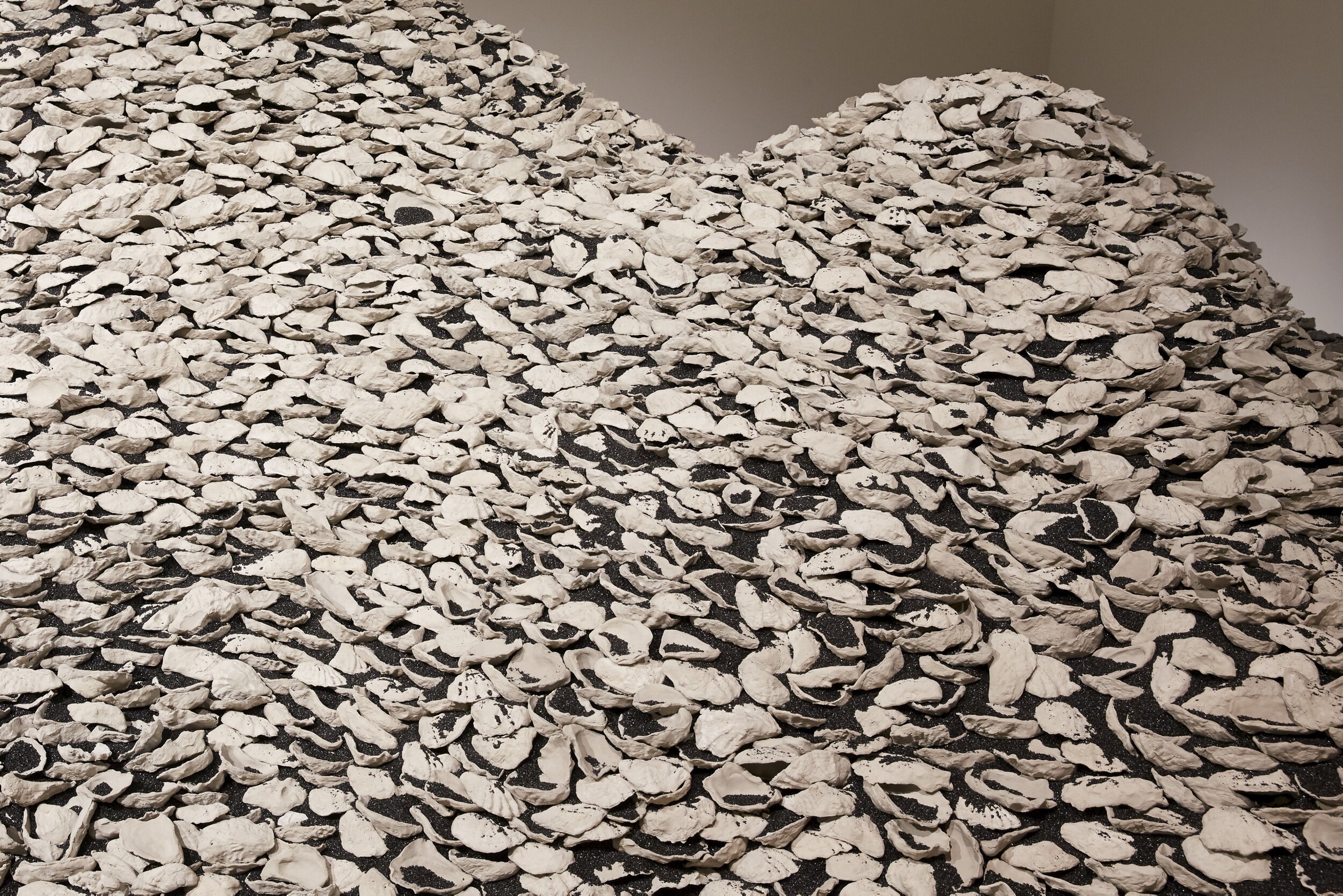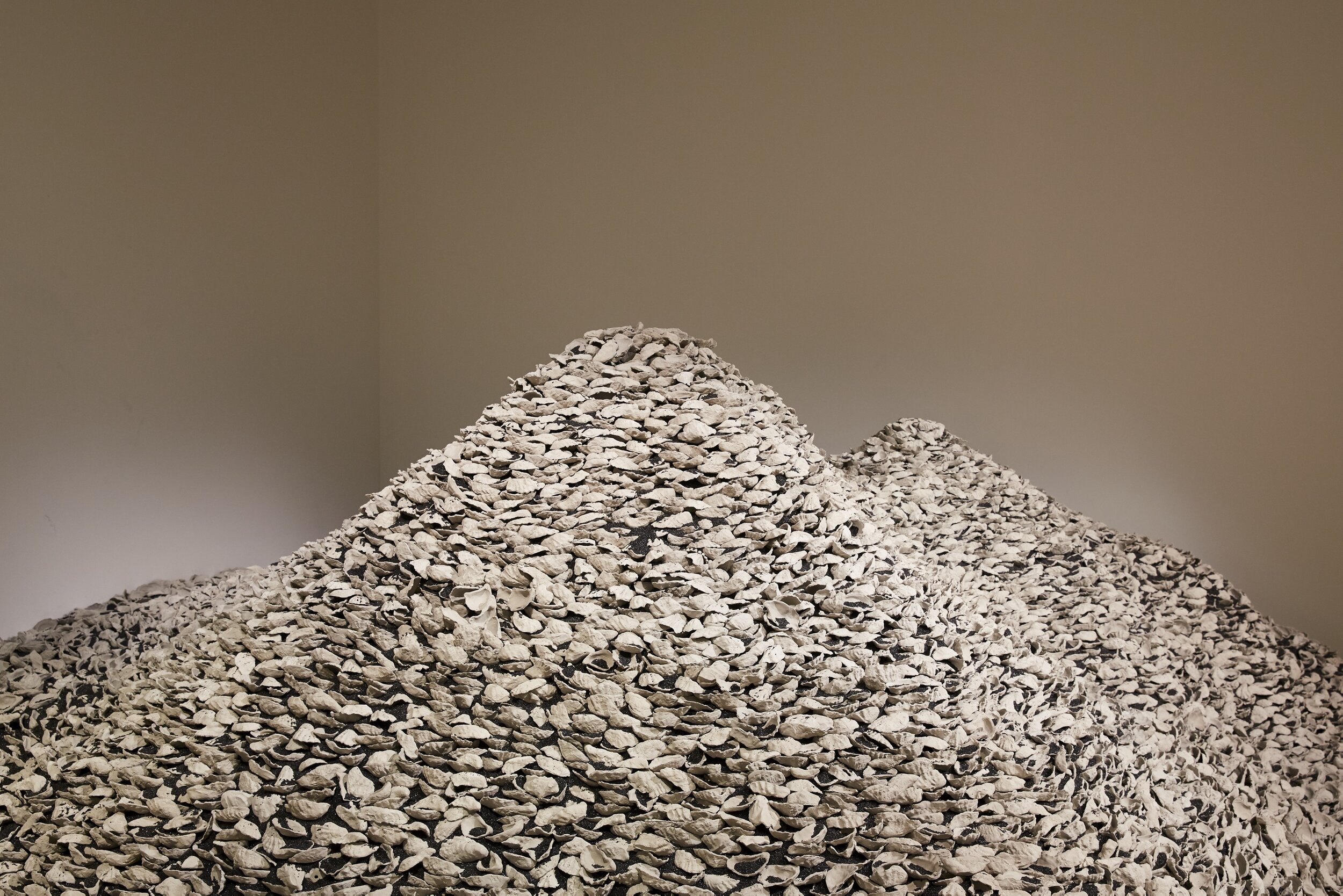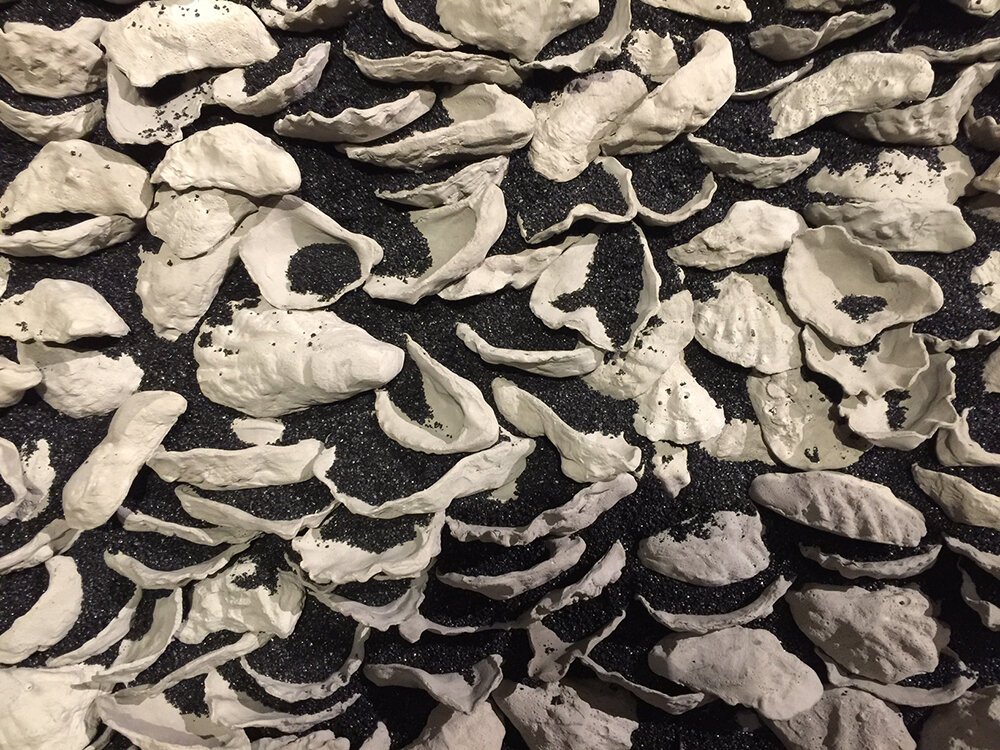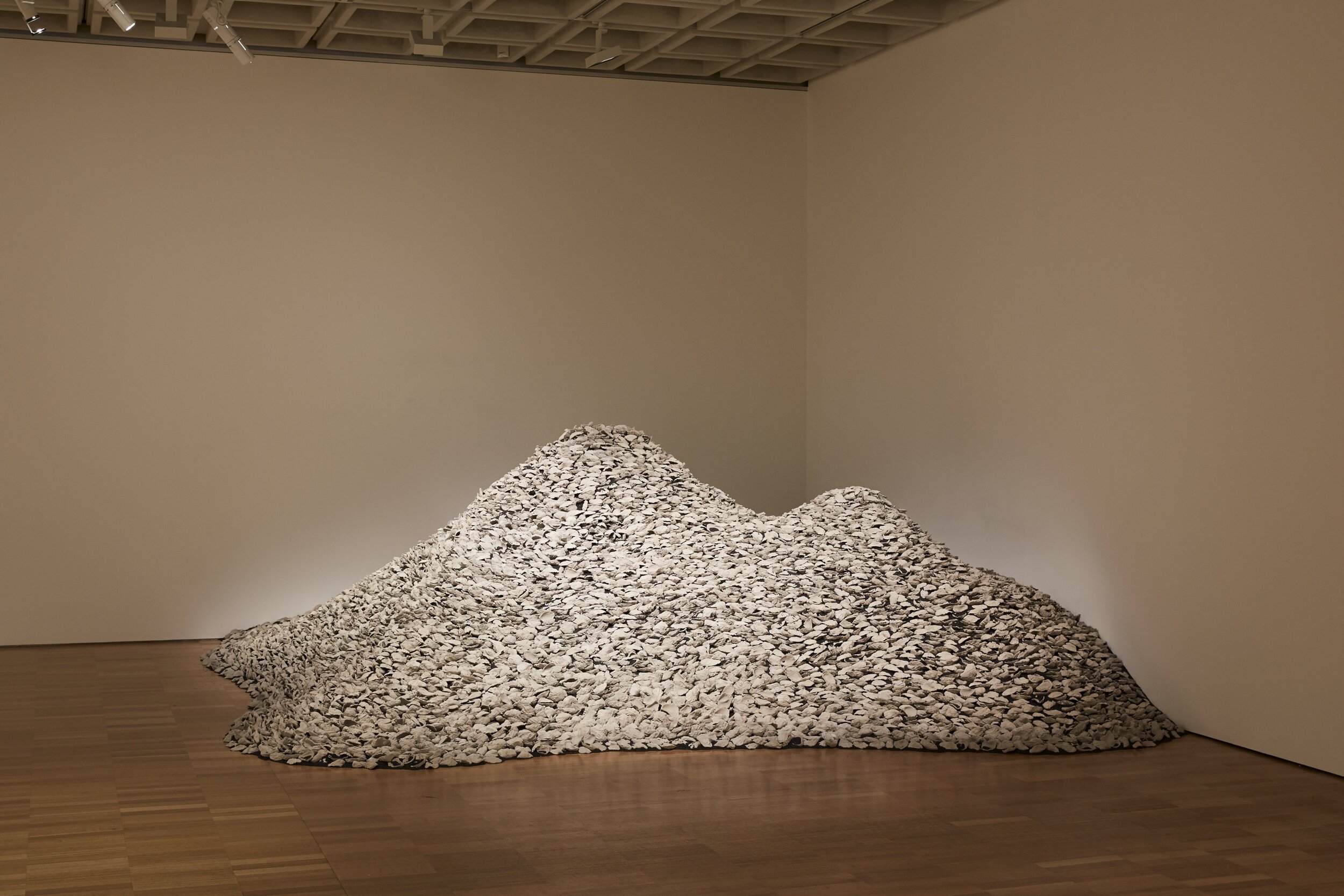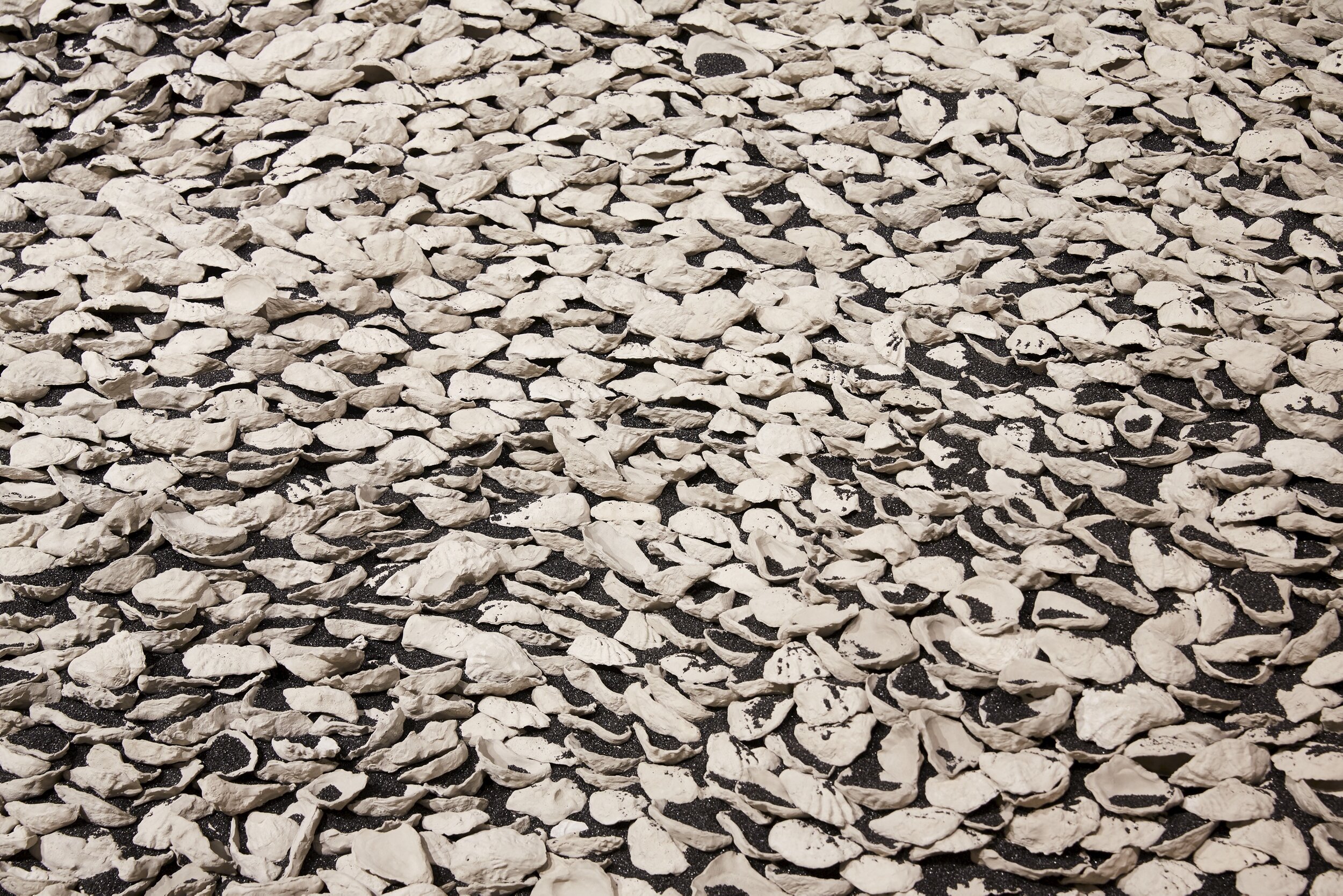RE FORMATION Part III (Dubbagullee),
2017
Concrete oyster middens in limenite
Commissioned by The National: New Australian Art - Art Gallery of NSW
Courtesy of the Artist and Milani Gallery, Brisbane
Photo by Felicity Jenkins, AGNSW
RE FORMATION part III (Dubbagullee)
Megan Cope’s practice explores the myths and methods of colonisation.
RE FORMATION part III (Dubbagullee) takes the form of a midden, mimicking the mounds of discarded organic matter that accumulated in Aboriginal communities. During Australia’s early colonial period, Europeans used these middens as a source of lime, which they burnt to create mortar for buildings.
Cope thinks of middens as a form of ‘Aboriginal architecture’. They are man-made structures that trace a record of occupation and culture over many centuries, debunking the colonial claim that Australia was terranullius, or unoccupied territory.
In RE FORMATION part III, thousands of hand-cast shells are arranged in a bed of copper slag, a by-product of copper extraction. Together, they connect the historical and continuing decimation of sacred sits by mining and other commercial activities. This midden is the largest Cope has made to date. Its title and use of a local food source invoke the grand shell mounds that were once found on nearby Dubbagullee, the peninsula now known as Bennelong Point, present-day site of the Sydney Opera House.
EXHIBITION HISTORY
- Commissioned by The National: New Australian Art 2017 - Art Gallery of NSW site
Curated by Lisa Havilah and Nina Miall. 30 Mar - 16 Jul 2017
Installation documentation by Felicity Jenkins, AGNSW.
PRESS
Helen Hughes “Upside down/right way up: Historiography of contemporary ‘Australian’ art.”
https://www.the-national.com.au/essays/upside-downright-way-up-historiography-of-contemporary-australian-art/
